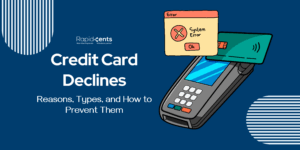Late payments can disrupt cash flow, increase uncertainties, and create unnecessary stress for businesses. According to a survey by PYMNTS in 2023, 81% businesses stated an increase in the number of delayed payments.
The good news is that getting paid on time is less about luck and more about the process. With a clear strategy, you can easily minimize the task of chasing delayed payments and get your customers to pay on time. Here are 10 tips to stay ahead of this stress.
1. Set Payment Terms from the Start
Confusion leads to delays. Always have your expectations about payment (due dates, accepted payment methods, late fees) outlined in as much detail as possible, and put them in your contracts, proposals, and invoices.
With clear deadlines, they will not be able to use missed dates or reminders as an excuse for not making the payment.
2. Invoice Immediately After Work is Done
Don’t wait until the end of the month to send invoices. The sooner you bill, the sooner you get paid. If you finish a project on a Tuesday, send the invoice that same day.
This creates a natural link in the client’s mind between the completed work and the payment due.
3. Make Payments Easy with Multiple Options
One reason clients delay paying is that the process is inconvenient. If you only accept checks, they might push it due to unavailability or other delays.
Offer multiple modern payment options, credit cards, bank transfers, and digital wallets, to make paying quick and easy.
4. Offer Incentives for Early Payment
Reward clients for paying quickly with small discounts or perks. Provide offers for payments completed within deadlines.
This can feel like a small concession for you, but it motivates faster action, especially for large invoices where discounts add up.
5. Send Friendly Payment Reminders
People forget. Reminders work. Send gentle reminders a few days before it’s due, the day it’s due, and a few days after if it’s still unpaid.
Automated reminders save you from having to spend hours on the chase and stop the back-and-forth via email.
6. Enforce Late Fees (Politely)
A gentle but clear late fee policy keeps clients aware and accountable. Even a small percentage (like 1.5% per month) signals that timely payment matters.
Clearly express this policy before work begins, so no one is surprised later.
7. Build Strong Client Relationships
Clients who value you prioritize your invoice. A good work relationship is not about being lax — it’s about talking, following up, and being professional.
Building a strong rapport makes it more difficult for clients to rationalize ghosting you, and that’s a good thing.
8. Use Milestone Payments for Big Projects
Instead of waiting for one giant lump sum, divide projects into stages with payments attached to deliverables and smaller goals.
This takes the financial burden off clients and protects you from going unpaid for months of work.
9. Automate Recurring Billing for Ongoing Services
For subscriptions or retainers, recurring billing is a total game-changer. Payments are made automatically on a schedule you set up without a manual chase or awkward reminders.
This ensures predictable cash flow and less admin work.
10. Make Payment Part of Your Sales Process
Establish expectations early; at the time of closing, discuss payment time frames and methods. Talking about it upfront at the start will help make it less awkward down the line.
Exceptional service doesn’t simply end with delivery; it also involves getting paid frictionlessly.
The Bottom Line
Consistent cash flow isn’t about sending more emails — it’s about building systems that make timely payments the default. By setting clear terms, making payment easy, and automating reminders, you speed up cash collection.
Wish to improve your invoicing?
RapidCents lets you send professional invoices, accept multiple payment methods, and automate reminders, so you can focus on growing your business, not chasing payments.




